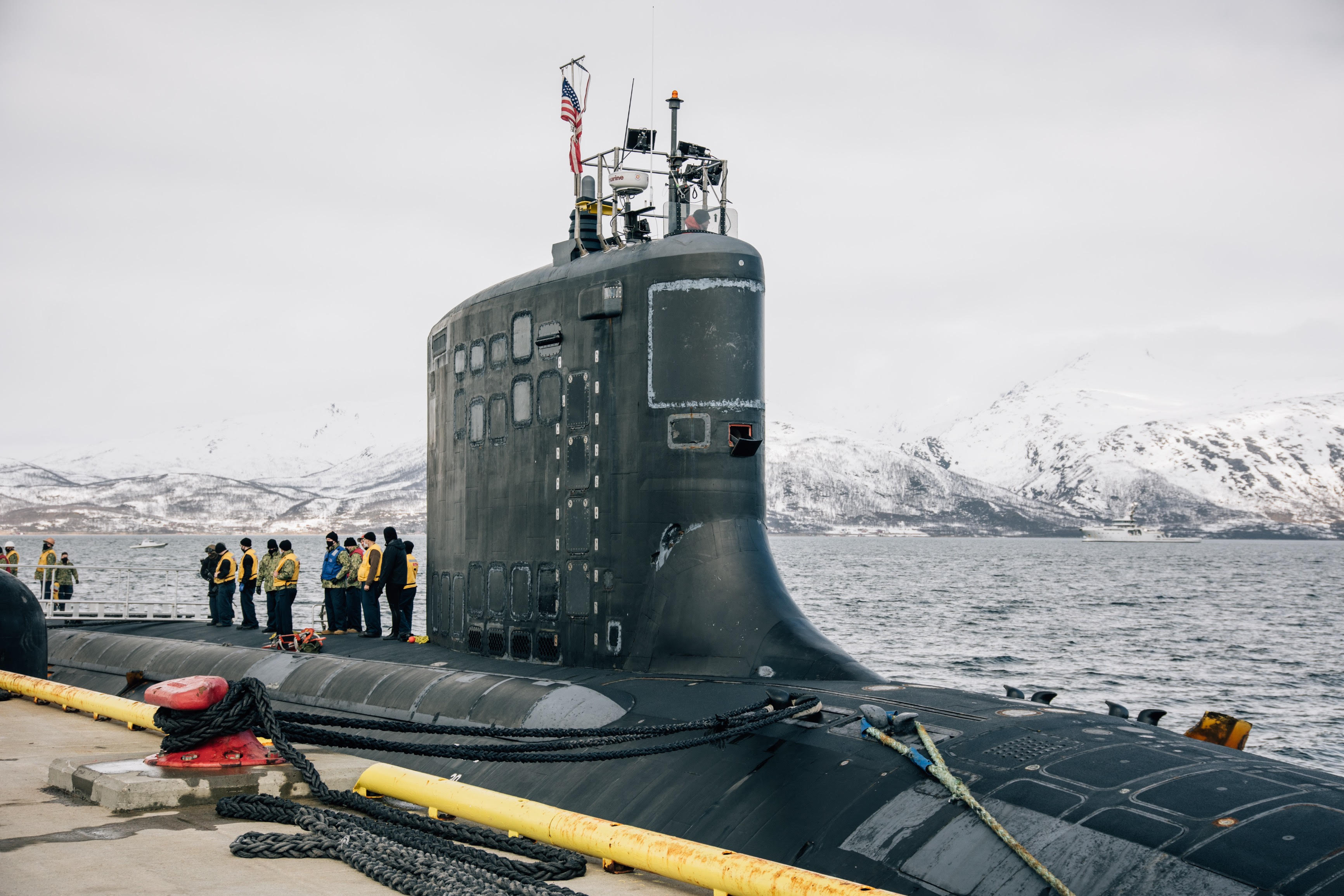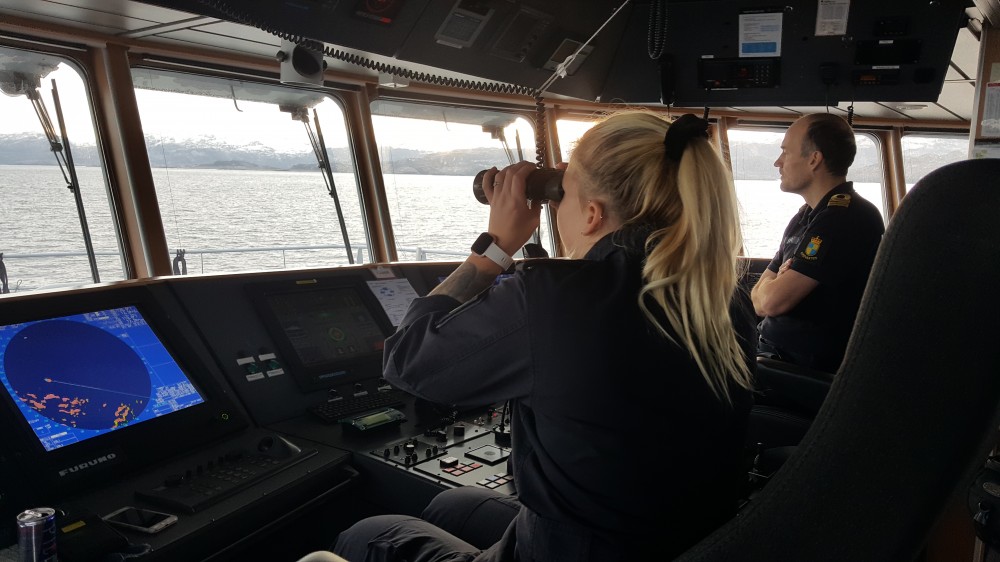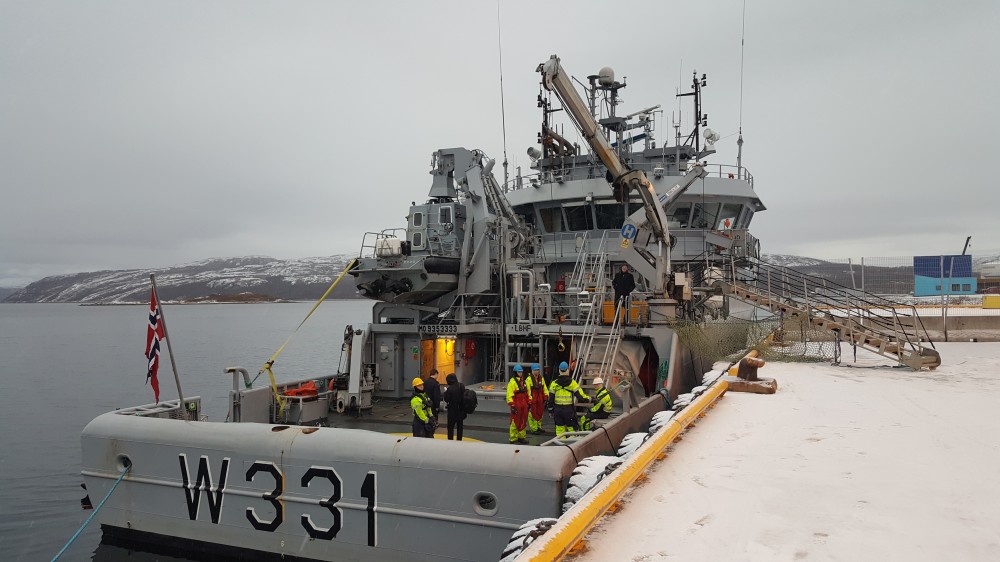Norway is deploying radiation drones along its coast amid concerns over a nuclear emergency
A sharp increase in nuclear-powered ships and ships carrying radioactive material represents an increasing risk of accidents, concludes a recent radiological and nuclear risk assessment study for the Arctic Council.
The risk is moderate and increasing in relation to nuclear powered ships and floating nuclear power plants, the report said.
The authorities are now intervening and using drones with radiation detectors on board the Norwegian fleet of five Inner Coast Guard patrol vessels from the North Sea region in the south to the Barents Sea in the north.
The danger is obvious. A worst-case scenario is a nuclear-powered ship with a reactor leak, drifting at sea or running aground with a wind direction towards populated areas. In northern Norway, nine out of ten people live less than four kilometers from the sea.
A drone can help to measure the radiation in the immediate vicinity of the ship in distress without exposing any of the emergency teams to any danger. The Coast Guard is already on duty around the clock and plays an important role in emergency preparedness.
More and more nuclear-powered icebreakers operate between the shipyard in St. Petersburg and their home port in Murmansk, like this weekend when the newest icebreaker, the “Arktika”, sailed around Scandinavia a few nautical miles off the coast.
The civil nuclear-powered “Sevmorput” also travels regularly between the Far East and St. Petersburg over the coasts of Siberia, Norway, Sweden, Denmark, Poland, Estonia and Finland, laden with seafood and other products. The ship is 33 years old and is not allowed to make calls to ports outside of Russia.
ADVERTISING
Occasionally, cargo ships bring spent nuclear fuel or radioactive materials into the port of Murmansk.
Navy submarines
Due to increased military tensions, both NATO and Russian nuclear submarines patrol the strategically important North Atlantic more frequently. Allied submarines even dock in Norway, like this spring when the “USS New Mexico” made a top-class visit to Tromsø.
Detailed contingency plans were drawn up prior to visiting the submarine. However, for Norway, which has an extensive network of radiation detectors on land, the challenge is what to do if something happens at sea.
“The Coast Guard has pilots and training ready. When the sensors are delivered, they will be used on the ships, ”says Lt. Cdr Stein Magne Eidissen the Barents Observer.
He says the project is a collaboration between the Coastal Administration, the Radiation and Nuclear Safety Authority (DSA), the Maritime Authority and the Coast Guard.
Lt. Cdr Eidissen adds that the ships of the Outer Coast Guard, which sail all the way north to Spitsbergen on Arctic voyages in the Norwegian and Barents Sea, will later be equipped with radiation detection systems similar to those of the Inner Coast Guard now.
In addition to the drone that is in use on board “KV Tor”, two detectors will be delivered and tested, while two more will follow in the next year.
The Coast Guard will also use drones for fisheries inspections, search and rescue, oil spill and various police duties.
Submarines and icebreakers
Norway’s Inner Coast Guard comprises the five ships “Nornen”, “Tor”, “Heimdal”, “Njord” and “Farm”. The latter has Kirkenes as its home port and sails in the waters closest to Russia’s Kola Peninsula, where several dozen nuclear submarines are stationed and is home to the growing Arctic fleet of nuclear icebreakers.
Two brand new icebreakers, each with two reactors, will be added to the fleet this year. The first is en route this weekend along the Norwegian coast from St. Petersburg to Russia’s ice-covered waters around the Yamal Peninsula and the Kara Sea.
From a drilling machine on board the “KV Farm” near the Norwegian sea border with Russia. Photo: Thomas Nilsen
In October, a team of experts from the Norwegian Federal Department of Radiation and Nuclear Safety (DSA) and the Coast Guard worked with national nuclear safety experts from the US Department of Energy at the Nevada test site. Together they tested how the drones could be used for detection. The former nuclear weapons polygon in Nevada has qualified personnel who develop remote-controlled vehicles for measuring radiation.
The Norwegian Coast Guard’s drone was the first to fly down the famous Sedan Crater to measure radioactivity.
Circumpolar collaboration
Two years ago, the Norwegians and Americans, together with Russian experts from the Rosatom emergency call center, sailed north to Spitsbergen to work on remote-controlled systems for measuring radiation in the event of accidents.
Working together in preparing for nuclear accidents is a priority for all circumpolar nations who agree that shared resources in sparsely populated areas benefit all.
“Our emergency preparedness in coastal areas and at sea was not good enough,” says Øyvind Aas-Hansen, Senior Advisor of the DSA High North section in Tromsø. In a telephone interview with the Barents Observer, Aas-Hansen praised the cooperation with the Norwegian coast guard. “The Inner Coast Guard has a well-trained crew. They are a very good resource for emergency preparedness along the coast, where the majority of the Norwegian population lives, ”he says.
“We never know where accidents can happen. But with the coast guard and their skills in handling drones, we are in the process of becoming world-class in preparation, ”explains Aas-Hansen.
 DSA’s Øyvind Aas-Hansen says international collaboration is the key to success for emergency preparedness in arctic regions. Photo: Thomas Nilsen
DSA’s Øyvind Aas-Hansen says international collaboration is the key to success for emergency preparedness in arctic regions. Photo: Thomas Nilsen
“The new drone detectors for radiation are unique. What we learn from it, we will definitely share with other nations, ”says Øyvind Aas-Hansen. He stressed that cross-sectoral collaboration with other agencies in Norway had taken the project forward. “DSA is a small player, but together with the Norwegian Coastal Administration, the Coast Guard and the Joint Rescue Coordination Center of Northern Norway we had the perfect team.”
The coastal administration owns the drones and was the initiator of the pilot project to commission detectors.
Major nuclear exercise in 2022
In May 2022, the partners will test the systems in a large international arctic radiation exercise in the area around Bodø in northern Norway.
“The scenario for the exercise is an event involving a reactor ship,” says Aas-Hansen. “Based on the departures and port calls of allied reactor-operated ships, it is a matter of course for us to give priority to ships in the north and on the west coast.”
In addition to Tromsø, US nuclear submarines make frequent port calls to the Haakonsvern naval base near Bergen.
 The “USS New Mexico” in the port of Tromsø. Photo: Helene Sofie Thorkildsen / Bundeswehr
The “USS New Mexico” in the port of Tromsø. Photo: Helene Sofie Thorkildsen / Bundeswehr
Sharp increase in reactors
The Barents Observer has published an overview (pdf) listing the increasing number of reactors in the Russian Arctic. The paper is part of Barents Observer’s analytical popular science studies of developments in the Euro-Arctic region.
According to the list, there are 39 nuclear ships or plants with a total of 62 reactors in the Russian Arctic today. This includes 31 submarines, a surface warship, five icebreakers, two on land and a floating nuclear power plant.
Looking ahead to more than a decade, the number of ships, including submarines, and reactor-powered facilities will grow to 74, for a total of 94 reactors, perhaps 114. In addition to new icebreakers and submarines already under construction, dusting off older Soviet ideas about using nuclear power for various types of industrial developments on the Arctic shelf, such as oil and gas exploration, mining, and research.
Although Russia’s existing “Akademik Lomonosov” and four planned floating nuclear power plants on the coast of the Chukotka Peninsula are to be operated thousands of kilometers east of the European Arctic, maintenance, testing and replacement of spent nuclear fuel elements will take place at the nuclear flotation base in Murmansk, a city with about 300,000 inhabitants a few hours’ drive from the border with Norway.
“By 2035, the Russian Arctic will be the most heavily nuclearized body of water in the world,” the newspaper said.
Existing icebreakers and submarines also extend their lifespan. The average age of the Northern Fleet’s nuclear submarines has never been as old as it is today. Several of the submarines built in the 1980s will continue to sail in the Barents Sea and under the Arctic ice cap through the late 2020s.
Serious accidents happen
 Crew members on watch from the bridge on board the coast guard ship “KV Farm”, which sails here a few hundred meters from the Norwegian sea border to Russia. Photo: Thomas Nilsen
Crew members on watch from the bridge on board the coast guard ship “KV Farm”, which sails here a few hundred meters from the Norwegian sea border to Russia. Photo: Thomas Nilsen
In the past few years, two serious accidents in the northern waters of Russia have rocked the world.
On July 1, 2019, a fire broke out on the top secret deep-diving submarine Losharik 60 nautical miles off the Russian border with Norway. The submarine was working on the seabed in Motovkiy Bay, north of the major naval bases of the Northern Fleet, at the time. All 14 sailors on board were killed in the fire that probably broke out in the batteries.
Losharik was powered by a nuclear reactor and operated on a secret mission for GUGI, the Principal Directorate for Deep Sea Research, a top-secret unit reporting directly to the General Staff of the Russian Armed Forces.
At this point in time, no radiation leaks were reported.
Later that summer, on August 8, a serious radiation accident occurred in the waters near the Nenoksa naval missile test site on the south coast of the White Sea.
Five Rosatom experts were killed and at least three others were injured in a Burevestnik missile explosion. The Burevestnik is a nuclear powered cruise missile currently being developed by the armed forces. The small reactor is said to give the rocket “unlimited range”.
Shortly after the explosion, radiation levels were measured many times higher than the background in the nearby town of Severodvinsk for about half an hour, the Barents Observer reported. The data was based on the public automated surveillance system in Severodvinsk with eight sensors in the city and at the Zvezdockha shipyard.
While the normal background in the city of 190,000 inhabitants is around 0.11 µSv / h (microsieverts per hour), the values measured on the monitor in Lomonosov Street near Lake Teatralnoye almost reached 2 µSv / h 20 times higher gamma radiation than normal. However, this is still well within acceptable levels for public exposure.
Fears more accidents
In its annual threat assessment report the following year, Norwegian intelligence warned that Russia’s reactor-powered weapon systems could lead to further accidents.
“In addition to the military challenges, the development will also bring with it environmental and security challenges. In 2019, about 25 Russians were killed in military activities near Norway, “said secret service director Morten Haga Lunde, adding:
“I think the risk of more such unintentional incidents in our neighborhoods in the years to come is great.”
 A drone with a radiation detector will soon be ready for use on board the “KV Farm”, the Norwegian coast guard’s ship that sails the fjords and the coast of Finnmark near the border with Russia’s heavily militarized Kola peninsula. Photo: Thomas Nilsen
A drone with a radiation detector will soon be ready for use on board the “KV Farm”, the Norwegian coast guard’s ship that sails the fjords and the coast of Finnmark near the border with Russia’s heavily militarized Kola peninsula. Photo: Thomas Nilsen




Comments are closed.